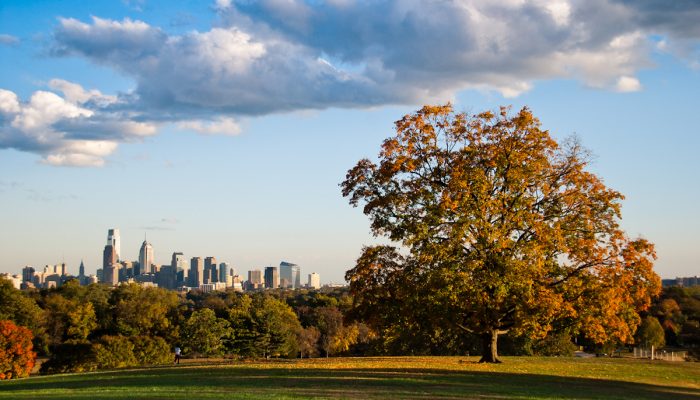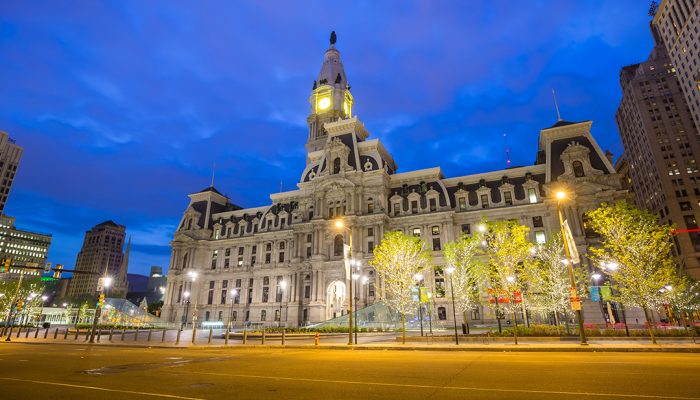A beloved sugar maple tree atop Belmont Plateau in West Fairmount Park will soon be removed.
For the safety of the many park-goers who visit Belmont Plateau, Philadelphia Parks & Recreation has made the difficult decision to remove an iconic sugar maple tree. The tree with the best view in the city is in decline and will be cut down in the coming weeks. Many have enjoyed a picnic under the tree’s branches. Many more have used the tree to frame photos of the Philadelphia skyline. We encourage park visitors to share their memories and photos of the Belmont Plateau Sugar Maple as part of a special “tree-bute.”
Why does the tree need to be removed?
The tree has lost some of its limbs, bark, and foliage. It is slowly dying. In the coming weeks, temporary fencing will be placed around the tree. The removal will begin in early December, weather permitting.
Why is the tree dying?
The Belmont Plateau sugar maple’s health has declined over the years. The loss of the tree is partly due its age and partly due to human activity. Also, climate change is impacting the survival of sugar maple trees in this region. Sugar maple trees like cold temperatures. They need to go dormant in the winter to recharge for the next season. Studies have shown that snowpack helps protect sugar maple tree’s roots. Warmer winters with less snow can affect the tree’s growth.
Can any parts of the tree be saved or repurposed?
The sugar maple’s trunks and large limbs will be preserved, if possible. Some may be turned into lumber at a local milling facility.
Will the tree be replaced?
Yes! Join us on Arbor Day, April 29, 2022, when to celebrate the sugar maple tree with the planting of new trees. We will plant three black gum trees (Nyssa sylvatica) near the location of the sugar maple. Like the sugar maple, black gum trees are beautiful year-round. But their fall foliage is particularly remarkable. The tree’s fruit is also beloved by many birds.
We also invite all to celebrate the life of this extraordinary tree in the following ways:
- Share your photos and memories of the sugar maple and tag #belmontmaple in your post. We will include some of the photos in an on-site tribute to the tree in the coming months.
- Learn about the Philly Tree Plan. The City of Philadelphia has embarked on a plan for Philly’s trees. The plan recommends growing the tree canopy equitably across the city. It also celebrates and supports the ways Philadelphians are already engaging with trees. Take a look at the Plan and take the survey to tell us what you think.
- Donate. Consider making a tax-deductible donation in support of Fairmount Park Conservancy’s programs and projects throughout Philadelphia’s park system.
- The sugar maple tree is native to the northeastern part of the United States and parts of Canada.
- Native Americans used the inner bark of the tree to make a tea to treat coughs and diarrhea.
- Sugar maples are known for their colorful fall foliage.
- The trees are also famous for a special treat they provide each spring: maple syrup.
- The average sugar maple tree produces around 3 gallons of sap daily and between 9 and 14 gallons per season.
- It takes about 40 gallons of sugar maple tree sap to produce one gallon of pure maple syrup.




